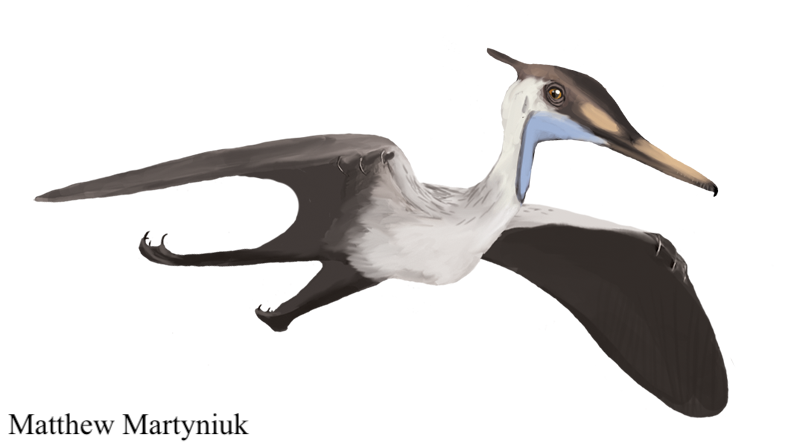Welcome to Aerodactylus

Name Definition
Air finger
Name Given By
S. U. Vidovic and D. M. Martill in 2014
Location
Solnhofen Limestone/Altmühltal Formation of Bavaria, Germany
Classification
Pterosauria, Pterodactyloidea, Ctenochasmatoidea, Aurorazhdarchia
Size
45-47 cm long wingspan, though this was based of a juvenile, and it is likely that adults were larger than this
Temporal Range
Tithonian stage of the late Jurassic, around 150.5 - 148.5 million years ago
Ecological niche
small piscivore
Species/Sub Species
A. scolopaciceps
Diet
Aerodactylus has many anatomical features that point towards a fish feeding lifestyle ; Aerodactylus possesses a very unusual hooked tip at the end of its beak which is similar to many raptorial birds known today that eat fish ; the increased and most likely conical teeth were in place to keep a tight grip on slippery fish it caught before moving it to its throat pouch and swallowing it
Introduction
Aerodactylus is a genus of pterodactyloid pterosaurs that lived in Germany during the late Jurassic. If you have heard of it, Aerodactylus was named after the reptilian Pokemon Aerodactyl. Similar to Megalosaurus, which was the first theropod ever named, Pterodactylus also suffered a wastebasket taxon effect for 150 years after it was described. Because of this wastebasket taxon, it has caused a lot of taxonomic problems today in reallocating species that differ from Pterodactylus. Aerodactylus was one genus that suffered from this wastebasket taxon effect of Pterodactylus and the type species was originally named Pterodactylus scolopaciceps. While Aerodactylus is only known from remains of juveniles, it is still evident that Aerodactylus was quite a small pterosaur, as many late Jurassic pterosaurs from Europe were. Aerodactylus has exactly 64 teeth, and their density increases as they get closer to the tip of the snout, indicating that Aerodactylus probably caught fish and other prey towards the anterior of the mouth. Unlike most pterosaurs, Aerodactylus has a downwards pointing hook at the end of its upper jaw which is seen in most birds of prey today. Another autapomorphy of Aerodactylus is (most noticeably) its rather circular crest that protrudes up from the head at a height of about 9.5 mm and also has a length of 44 - 51 mm. Additionally, it is also noted that Aerodactylus has another cone-shaped protrusion called a lappet coming out from the back of its head. In both cases for these ornamental structures, they probably were consisted of soft tissue and not from bones in the skull. Further soft tissue traces show us that a throat pouch was present from midway on the lower jaw to the upper portion of Aerodactylus’ neck. The claws on the feet of Aerodactylus have also been confirmed to have elongated keratin coverings beyond their bony cores which would have made them very long proportionate to Aerodactylus’ size. Along with these adaptations, Aerodactylus would have been an exceptional piscivore like most pterosaurs.